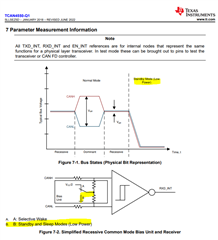Tool/software:
 Hello team ,
Hello team ,
we are planning to turn off the internal LDO or supply line that will power the CAN transceiver when our Micro controller detects the over voltage .
Is there a option to turn off the internal supply so that Bus voltage will be zero by configuring the registers through SPI.when our UC detects the over voltage .


